PARENTS MANUAL
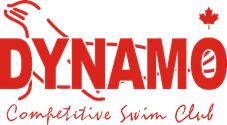
ESTABLISED 1998
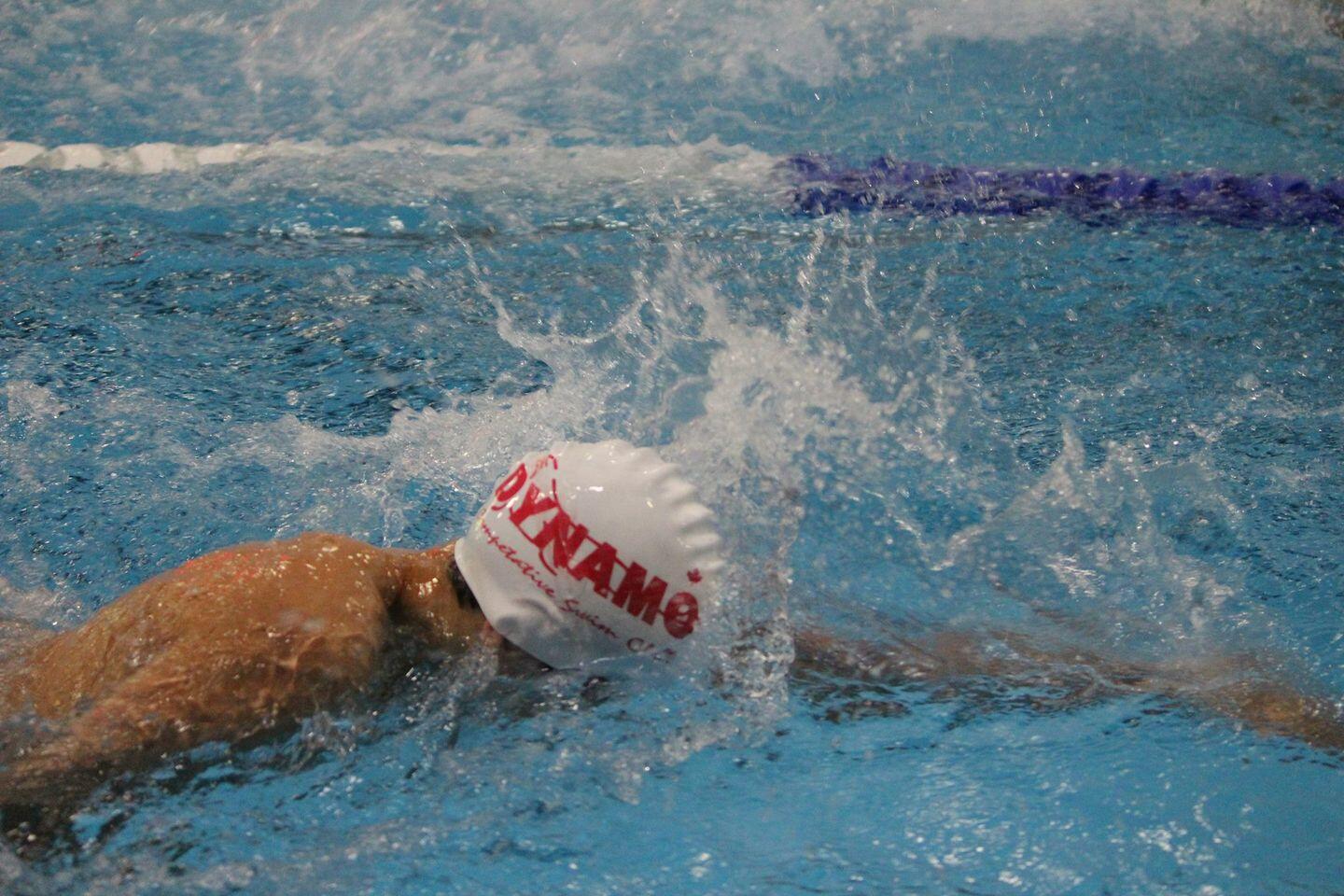
About us
Thank you for choosing to join one of the best swimming programs in Canada. Our qualified, professional, and dedicated staff work hard to ensure that your swimmer will have every opportunity to learn to swim the 4 competitive stroke and succeed in this sport. We believe that we have an outstanding program that relies on parent volunteers to make it work as well as it does. The sport of competitive swimming is one of the few sports that can be enjoyed throughout an entire lifetime. Both the athlete and their families can share in this experience when involved in our program. There are as many things going on out of the pool as in it! Without the dedication and commitment of our volunteers the sport could quite simply not function. We need you! The purpose of this Manual is to ensure all members understand the policies and procedures of the Dynamo Swim Club. All Dynamo member information distributed by Dynamo in this Manual, or elsewhere, is for the exclusive use of Dynamo members only. Policies and Procedures in this handbook are updated and accurate as of the date of publication. When updates are made to specific policies notice will be given when published to the Dynamo website. General Information Communication and information updates are provided on a regular basis through email, the club newsletter on the club website:
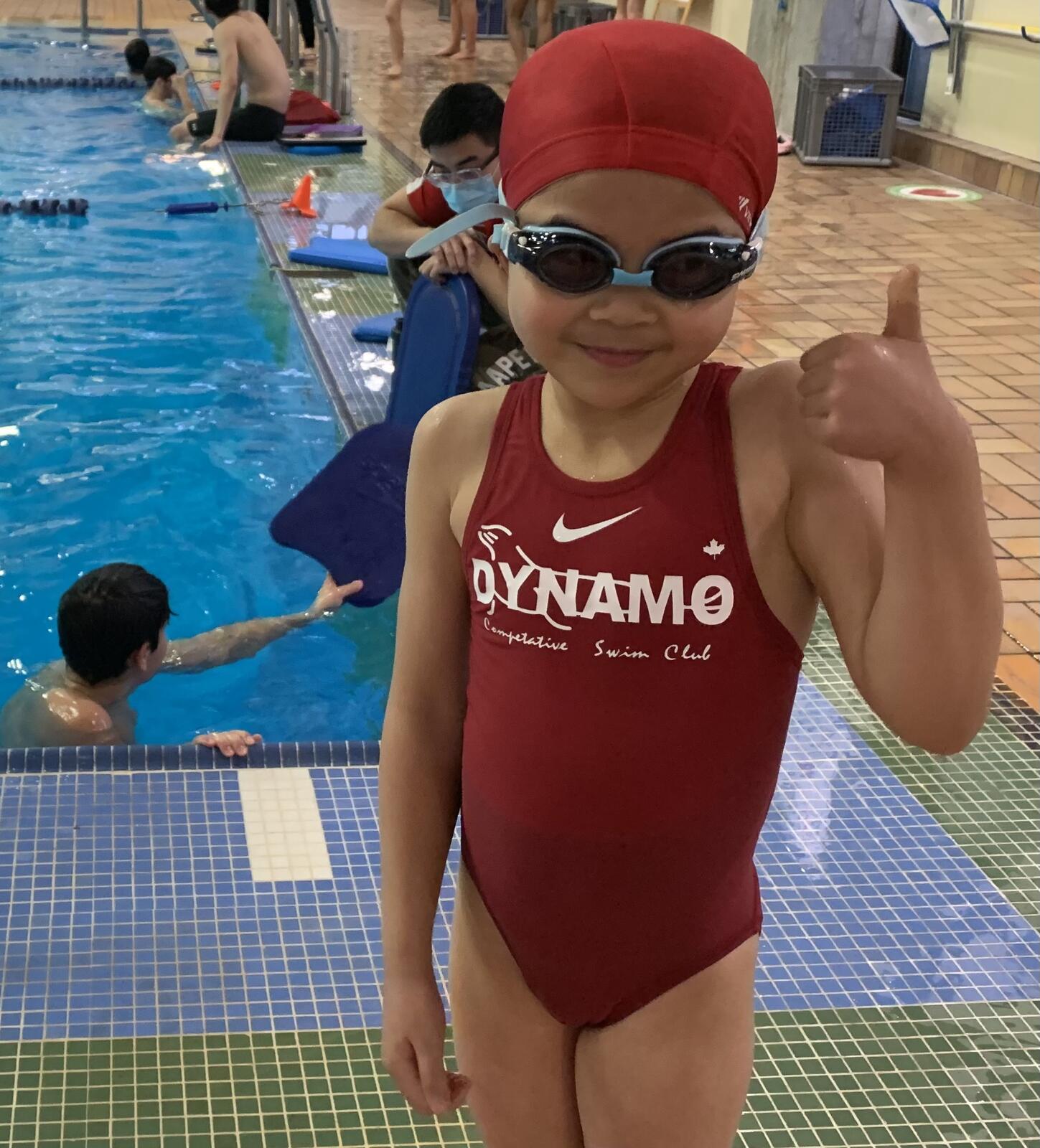
Dynamo Needs You!
DYNAMO SWIM CLUB is a non-profit society committed to supporting the activities of Dynamo Swim Club
• All parents/guardians and registered swimmers are DYNAMO members.
• All families are entitled to one vote on club matters at General Meetings.
• Parents are encouraged to attend any of the monthly meetings of the Board of Directors.
• The Board of Directors for the swim season is decided at the DYNAMO Annual General Meeting in October.
• Any parent or guardian of a registered swimmer is welcome and encouraged to becoming a member of the Board of Directors. No experience required! Its specific purposes are:
• To provide volunteer services for the Members of DYNAMO regarding such activities as communications, coordination of swim meets, training of officials and travel.
• To provide financial assistance to the Members of Dynamo including but not limited to such matters as pool rental, coaching costs, competition, entry fees, travel and equipment.
• To promote the sport of competitive swimming within the community.
Dynamo has a constitution and bylaws. As well, we have a personal information and privacy policy. The DYNAMO board meets approximately once per month, typically on the second Monday of each month. However, the actual dates, times and locations can vary so please check the list of Upcoming Events on the website for the most current meeting information. All parents are welcome and encouraged to attend the board meetings. Standing rules for how the board meetings are conducted are available.
DYNAMO needs you!
Our Club relies on parents for much more than just bringing their swimmers to training - we need your help in making the entire experience function flawlessly. Your volunteer contribution is a necessity! As a competitive swim club, we need a certain number of officials at our meets. When you volunteer at a meet, you are not just helping your swimmer, you’re helping all swimmers, both directly and indirectly. Directly, the meet happens: without volunteers, meets don’t run. With your help, all swimmers have an opportunity to swim fast and achieve their goals. And meets are also a lot of fun - a great way to learn about the sport, meet other parents and be on deck while your child swims. See the Club Commitment and Volunteering Policy on the Documents and Forms page of the website for expected volunteer contributions from families in Regional, Divisional, Provincial groups. Aunts, uncles, grandparents and other family members and friends can also volunteer and their contribution will count toward your club commitment! 12 participation is a necessity! help at a meet, you are volunteer officials, meets can't run. With your help, swimmers have fun. See the Club Commitment Policy on the website for expected shift contributions from families in Swim Team. Starting in 2021 the contribution is $250 at Registration and will be refunded if you work at the swim meet Dynamo is hosting. Aunts, uncles, grandparents and other family members and friends can also help and their contribution will count toward your club commitment!
FINANCIAL OVERVIEW
Where the Money Comes from. The main reason we host meets is to save you money. Hosting meets at home means less travel, no hotel/ overnight costs, and an opportunity to raise tens of thousands of dollars for our club, which in turn helps keep competitive swimming more affordable for you! Other sources of revenue for the club are Community Gaming Grants, general fundraising (including our annual Swimathon) and program fees. DYNAMO and administrators work tirelessly each year to access Gaming funds by writing grant applications. Gaming monies account for about 10% of our revenue. The largest source of revenue are the fees we charge. We offer great value and have calculated the fees based on our operating costs - many of which we have no control over. Where the Money Goes To The two biggest expenditures are the costs of the coaching staff and pool rentals. We have a staff of 9 coaches providing training in our competitive and Swim School programs at CGBrown, Bonsor, Edmonds, Robert Burnaby, Guildford pools. Pool rentals for training amounts to upwards of 10 hours per day collectively! A swim meet can run up to 55 hours. Time trials, our popular MINI SWIM MEET for younger swimmers, and other events can require 1-4 hours of pool time. Swim BC fees are fixed and we have no control over these fees. These fees include our Swimming Canada fees. It should be noted that the staff were instrumental in the negotiation and the establishment of pool fees since the starting the programs in 1998 .
Officiating at Swim Meets
There are many jobs to choose from and eventually you will need to attend certification clinics to do most of the volunteer jobs required. We will keep you updated as to when these clinics will be held. The following are a brief summary of the jobs available for you to volunteer. SwimBC Provincial officials help with at swim meets. Position Description of Duty Timers Timers take the swimmers times in an assigned lane, usually by pressing an electronic plunger. Safety Marshals Safety Marshals ensure that all appropriate warm-up procedures are followed. Food Preparation Food preparation volunteers organize and distribute food and drinks to the officials during the course of the meet. Referee The Referee is the Chief Official over all other during the meet. They ensure fairness and make decisions as required. Starter The Starter starts each race by activating a starting device. They ensure the start is fair. Clerks of Course Clerks of Course maintain the database for deck entries and scratches. Where necessary they check-in swimmers and direct them to the proper heats and lanes. Chief Timer The Chief Timer is responsible for all Timers, watches & timing plungers. Judges of Stroke and Turn Judges of Stroke and Turn observe correctness of stroke and/or turn to ensure that no swimmer gets an unfair advantage. Meet Managers Meet Managers plan and administer the whole meet, ensuring all positions are filled and all requirements are met. They work in the background, often in the timing booth. Chief Finishing Judges Chief Finishing Judges compile the order of finish of a race based on Timer’s results sheets or Chief Judge Electronics order of finish tapes and reports. They work in the background, often in the timing booth. Chief Judge Electronics Chief Judge Electronics supervise results coming from an automated electronic timing and judging machine. They work in the background, often in the timing booth. Electronics Operators Electronics Operators operate or assist in the operation of any SNC approved Automated Officiating Equipment. They work in the background, often in the timing booth. Recorder/Scorer Recorders/Scorers maintain results as directed by Chief Finish Judge and Chief Judge Electronics. They load results to the web for live results. They work in the background, often in the timing booth.
SWIMMING HIERARCHY
At a quick glance the world of competitive swimming seems easy - bring your swimmer to the pool, we train them, they swim fast, we compete, and everybody is happy. If it were only so simple! The next few paragraphs will help explain the complex nature of our sport and who does what.
Competitive swimming has evolved into a highly organized bureaucracy. This is done to ensure a level playing field (swimming pool) for all swimmers around the world. There are rules for everything - from how a pool is constructed to the foot position of a swimmer doing a backstroke start.
The major hierarchy consists of FINA at the international level, SNC at the national level and SwimBC at the Provincial level. Competitive swimming is governed by FINA - Fédération Internationale de Natation (the International Federation of Amateur Swimming). FINA makes the rules that apply to the highest level of our sport - the Olympics (a dream goal ).
They organize the swimming events at the Olympic Games and the World Championships. They recognize and verify world records in all swimming disciplines. For more information about FINA please check out their website at www.fina.org Swimming/Natation Canada - SNC is the national governing body of our sport. The federation comprises 75,000 members and 400 swim clubs across the country. SNC is a member of FINA and are in charge of organizing national level meets such as Senior Nationals, Age Group Nationals, selecting athletes to represent Canada at international games such as the Olympic Games, Pan-AM Games, Pan Pacific Games, and the Commonwealth Games. SNC recognizes and verifies all Canadian swimming records in all disciplines.
They adhere to the rules governing our sport set forth by FINA and publish (on-line) the rules as they apply to Canada. For more information visit their website at www.swimming.ca Swim BC is the provincial section which governs the Swim Clubs within British Columbia.
They recognize and verify all BC records in all disciplines. They grant meet sanctions to clubs. They offer clubs the chance to host provincial meets such at AAA Championships.
For more information visit their website at http://swimbc.ca . Bell Lap: In the 800m or 1500m freestyle races a bell is rung as the swimmer approaches/leaves the wall for their last lap indicating that they only have 50m (short course) or 100m (long course) to swim. Blocks:
The starting platform located behind each lane.
Bulkhead: A wall constructed to divide a pool into different courses, such as a 50 metre pool into two 25-meter courses. Course: Designated distance (length of pool) for swimming competitions. Short Course (SC) = 25 meters / Long Course (LC) is 50 meters.
Deck: The area round the swimming pool reserved for swimmers, coaches and officials.
Deck Entry: Entries accepted into swimming events on the first day or later day of a meet.
DQ/Disqualified: This occurs when a swimmer has committed an infraction of some kind; e.g. freestyle kick in butterfly. A disqualified swimmer is not eligible to receive awards, nor can the time be used as an official time.
Dryland Training: Training done out of the water that aids and enhances swimming performance; usually includes stretching, calisthenics and/or weight training.
Event: A race or stroke over a given distance. An event equals one preliminary with its final, or 1 timed final.
Gutter: The area along the edge of the pool in which water overflows and is recirculated through the filtration system.
False Start: Occurs when a swimmer moves prior to the sounding of the start command.
Final: The championship heat of an event in which the top six or eight swimmers from the preliminaries compete, depending on the number of lanes in the pool.
Finish: The final phase of the race: the touch at the end of the race.
Flags: Backstroke flags placed 5 meters from the end of the pool.They enable backstroke swimmers to execute a backstroke turn more efficiently by counting their strokes.
Heat Sheet: The pre-meet printed listing of swimmers’ seed times and order of swimming in the various events at a swim meet.
Heats: Since there are only 8 lanes in which to race and usually many more swimmers the swimmers are divided into heats. i.e. 160 swimmers in the 50 freestyle = 20 heats. Heats are usually swum slowest to fastest with final three heats “Circle Seeded”.
I.M.: Shorthand for Individual Medley.An event in which the swimmer uses all four strokes on the following order: butterfly, backstroke, breaststroke, freestyle.
Lane Assignment: The lanes are filled from fastest to slowest in the following order: lane 4, 5, 3, 6, 2, 7 , 1 and 8. Long Course (LC): A pool 50 meters in length. Most long course meets occur in the spring and summer.
Relay: An event in which 4 swimmers compete together as a team to achieve one time. 19 22 Relay Events: Short Course: 4 x 50 free, 4 x 100 free, 4 x 200 free, 4 x 50 medley, 4 x 100 medley / Long Course: 4 x 50 free, 4 x 100 free, 4 x 200 free, 4 x 50 medley, 4 x100 medley.
Prelims: Slang for preliminaries, also called Heats or Trials. This races in which swimmers qualify for the championship and consolation finals in an event. Sanction: An official status allowing an organization (swim club) to hold a swim meet.
Meet must abide by all aspects of the sanction. All times for all events will be official and recognized by all governing bodies.
Scratch: To withdraw from an event in a competition.
Session: Portion of meet distinctly separated from other portions by locale, time, type of competition or age group. Most DYNAMO-hosted meets have two sessions each day - the preliminaries heats are usually held in the morning session.
The fastest six to eight swimmers, and in some events, the next fastest 6-8 swimmers will swim again in finals.
Short Course (SC): A pool 25 meter in length. Most short course meets occur in the fall and winter.
Split: The time it takes for a swimmer to swim a specific segment of the race. Most events can be broken down into equal segments of 25 or more commonly 50 meters. i.e. a 200 meter race has 4 x 50m segments. Each 50 meter segment could/would be timed. The splits for the race could be: :28.52 + :29.87 + :29.99 + :29.01.
The first split is referred to as the “takeout” split. Swim Off: When two (or more) swimmers finish the preliminaries in a “finals position” with the exact same time they will race the event again at the end of preliminaries (or an agreed to time before the finals) to establish seeding or placing. Swim Off times are official times.
Swimming Strokes: Freestyle, backstroke, breaststroke, butterfly, individual medley. These strokes all must be executed in accordance with the rules of swimming which you can view at www.swimming.ca/docs/2013%20Swimming%20Canada%20Rules.pdf Time Standard: Also known as a Qualifying Time (QT).
Some meets require swimmers to have met a qualifying standard prior to being entered in the meet. These standards are often set by the provincial section (SwimBC), the national section (SNC), the host organization, or by FINA. Time Trial: A time-only swim that is not part of a regular meet.
Timed Final: The race is only raced once. This often happens for the longer distance races such as the 800m and/or 1500m and is done as a time saving measure.
Slower heats in the preliminaries and fastest heat in the finals.
Touch Pad: A large touch sensitive board at the end of each lane where a swimmer’s touch is registered and sent electronically to the timing system.
Warm Down (Swim Down): Low intensity swimming used by swimmers after a race or main practice set to rid the body of excess lactic acid, and to gradually reduce heart rate and respiration.
Warm-Up: Low intensity swimming used by swimmers prior to a main practice or race to get muscles loose and warm and gradually increase heart rate and respiration.
DYNAMO SWIM CLUB HISTORY1.jpg)
.jpg)
Lidia Lucaciu Menzies founded the Dynamo Swim Club in 1998.
Lidia swam competitively for Romania placing first in National and International competitions. She continued to race at the master’s level and placed first in her disciplines from 1983 through 1990. She also placed first in the Naytikh Ebdomada Competition in Greece in 1992. Since she started coaching in 1982 Lidia has trained several very successful swimmers at all levels. Some of her swimmers have reached the international stage and swam at Olympic and Para Olympic Games A Professional Head Swim Coach with over 20 years of progressive experience in the coaching field. Skilled in talent identification, organizing, working with athletes in all age groups and levels, including disabled athletes. She earned a reputation for developing coaches and swimmers to achieve their maximum performance levels, mentoring responsibilities related to the overall enhancement of coaching knowledge, and promoting enthusiasm. · Lidia also published the book "Talent Identification in Swimming" in Canada 1995 · https://youtu.be/EE8cJAULx64
Lidia Lucaciu Menzies https://www.youtube.com/watch?v=efOx04nMjGo
Since then, Dynamo Swim Club has recognized tremendous growth in many different areas: from 8 to 250 swimmers, from 1 pool to 6. From 2 coaches to 11 all while putting many swimmers through its programs every year. Thousands of swimmers of all different ages and abilities have come through our doors learn to swim from first lesson in our SWIM SCHOOL and swim groups. DYNAMO is proud of the role it has played in developing many of BURNABY Canada’s best swimmers as well as many fine citizens.
OLYMPIC SUCCESS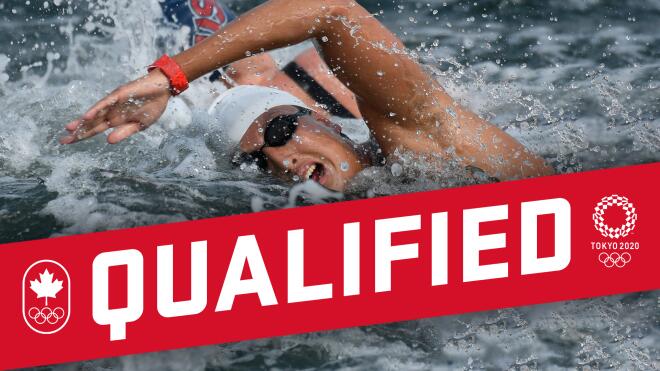
Hau-Li Fan is just one of a Dynamo swimmers who learn his first swimming lesson with Dynamo Swim School and made the Canadian Olympic Team swimming in Tokyo Olympic Games last summer the 10 Km race (9th place)
DYNAMO VISION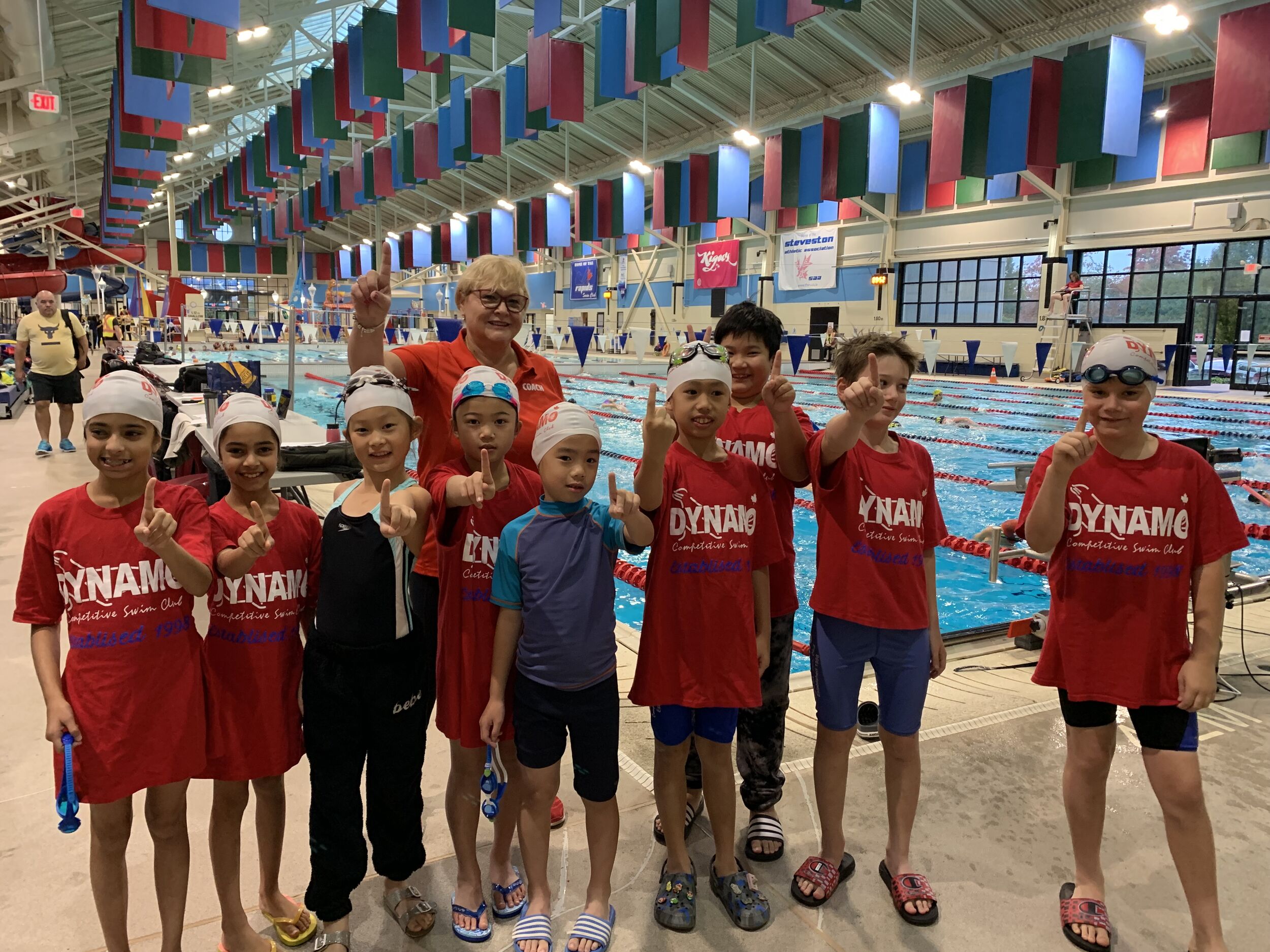
Dynamo Swim Club is recognized as one of the best run swim clubs in Canada. We are proud of the organized and professional way Dynamo is run. Our Vision at Dynamo Swim Club is to teach swimming lessons for competitive swimming in our Swim School programs and create a swimming environment that nurtures excellence by challenging athletes at all levels of development. Our Club is an athlete-focused, professionally led and parent-supported swim club, committed to teach swimmer to swim fast and having swimmers at all levels achieve their full athletic potential. Swimming is a sport that requires dedication and perseverance. Along the way, our athletes achieve the satisfaction and enjoyment that comes from meeting the challenges and personally defined, difficult and rewarding long-term goals. They also share in the goals and achievements of their friends and competitors and experience the fun and camaraderie of team effort and achievement. In consequence, we believe that our swimmers learn important life skills at the pool, in addition to learning how to swim fast. Dynamo swimmers’ range in experience from our youngest beginners to high performance international athletes. We welcome all swimmers who are over 18 to join our “Masters” program - after all, swimming can be enjoyed throughout one’s lifetime.
EQUIPMENT REQUIREMENTS
In Dynamo programs all swimmers wear a cap, goggles, training suit, DYNAMO t-shirt, sports shorts and running shoes for every workout. A spare pair of goggles, a spare cap and a spare suit are also recommended. Without these essential items your swimmer cannot train. There are other pieces of equipment that your swimmer will need to acquire as they progress through the levels. These include a kickboard, pull buoy, skipping rope, swimming snorkel, swim fins, paddles, and mesh equipment bag. To optimize training every swimmer should have a water bottle at the side of the pool with them. Did you know that a swimmer sweats better (more efficiently) than most athletes? It’s true for two reasons: the temperature of the water and the chemical balance of the pool. When purchasing a swimsuit, it’s important that your swimmer get the right size, especially for competitions. As a rule, a training or racing suit should look like it is 2 sizes too small when it is dry. Suits will stretch when wet and if it is too big it will be uncomfortable, and cause drag. Please check with your swimmer’s coach before buying a racing suit. These suits can be very expensive and last a limited time. Please note that technique and strategy are far more important than the suit the swimmer is wearing. * Most of the swim wear and equipment in the table below is available through DYNAMO, as well as additional gear such as team bags, track jackets and track suits, deck parkas, caps, toques, sweatpants, and more. Equipment order forms are available on the DYNAMO website. Training Group Training Suit Team Cap Team shirt Goggles Sport shorts Running shoes Skipping rope Fins Snorkel Kick board Pull buoy Paddles Divisional Groups See your coach Required* DYNAMO Swim Wear and Equipment
SWIM MEETS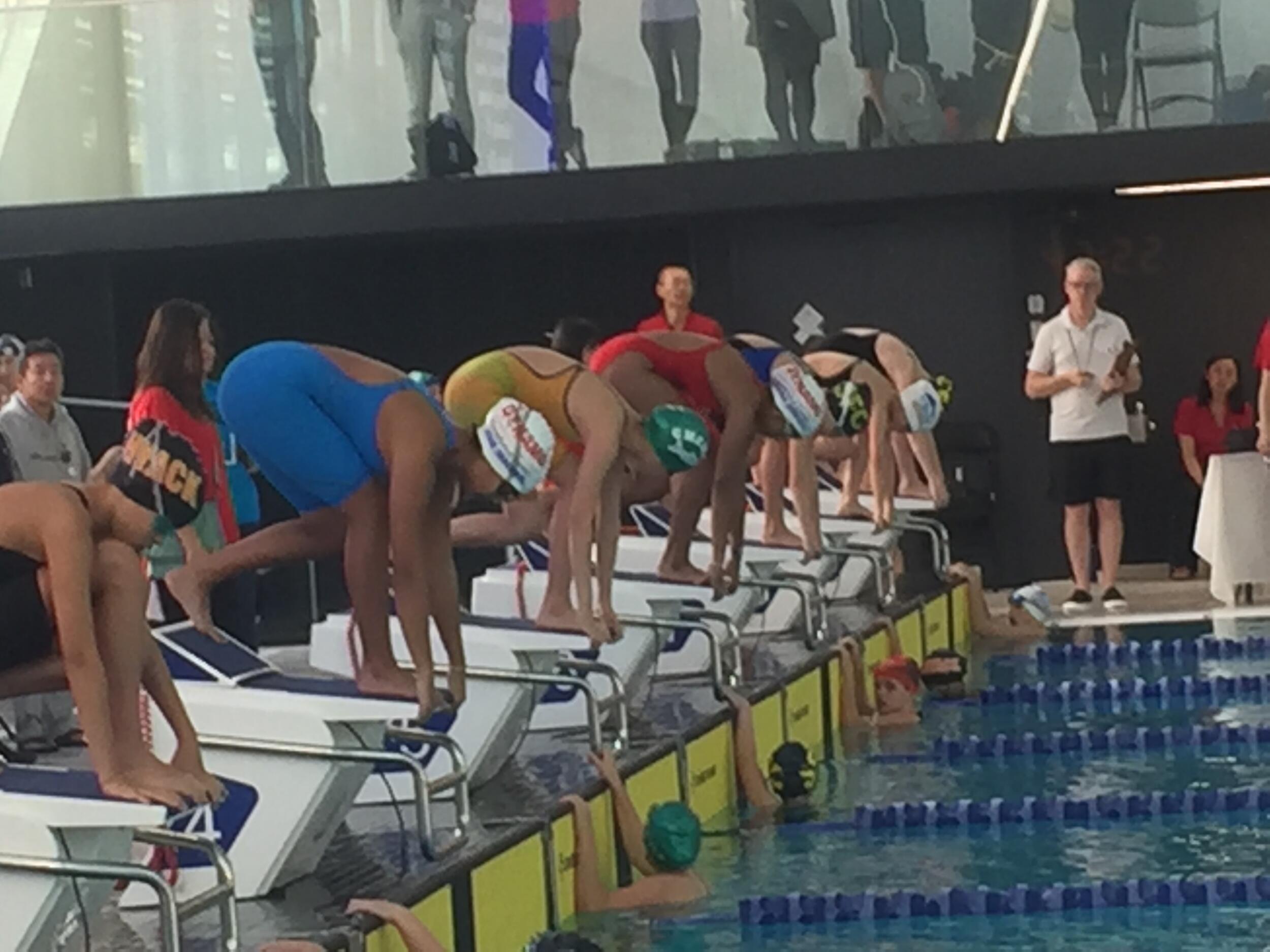
DYNAMO SWIM CLUB is one of the BEST programs in BURNABY and Surrey. Dynamo is hosting one or two competitions / season. They allow swimmers to pursue personal bests and measure their individual improvement and progress toward goals. General Information about Swim Meets Swim meets are long, but they are a lot of fun for swimmers and families. Meets usually begin around 8:30am, with warm-ups starting as early as 7:30am. The morning/preliminary session usually ends around 1:30pm. If there are finals, that session usually begins around 5:00pm, with warm-ups starting around 4:00pm, and ends around 8:30pm. Coaches usually want their swimmers at the pool anywhere from 15-30 minutes before warm-ups begin. Swimmers’ warm-up as a team with their coaches, beginning with activation on the deck followed by warm-up in the pool. Swimmers are under the care of their coaches on deck. Parents are not allowed on the deck during swim meets unless they are volunteering. Swimmers should have all of their gear, food and water for the session with them. They talk to their coaches before and after races and are expected to be in the team area in between their races. Swim meets are classified by the length of the pool. A Short Course (SC) meet will be held in a 25-meter pool whereas a Long Course (LC) meet will be held in a 50 meter pool. The SC season runs from September through to March and is followed by the LC season running until August. Signing up for Meets Information on upcoming meets is available on the website. Upon request, swimmers and parents can let their coach know if the swimmer will be attending a meet and the coach will take care of the sign-up and meet entries and determine if the swimmer qualifies for the meet. Team Travel The club provides the option of team travel for out of town meets. In addition to providing significant cost savings for families and helping athletes develop independence, team travel provides a safe and controlled environment for our children to develop life skills such as time management, looking after their stuff, managing small amounts of money and making good healthy life decisions (sleep, nutrition, rest, etc.). National meet athletes are expected to stay with the team. Travel, entries, accommodation, and most meals are organized by the club and families are billed for a portion of the shared costs. Information on the club’s Behaviour, Code of Conduct and Travel Guidelines can be found at the Documents.
TYPE OF SWIM MEET: FRIDAY MINI MEET is Our popular MINI MEET is held 4 times each season at the CGBROWN POOL for our younger and beginner swimmers. Only DYNAMO swimmers participate, and it is a great way to introduce competitive swimming to the novice swimmer in a fun, friendly, relaxed environment. These races run from 4:00pm to 6:00pm. The races are timed so parents are encouraged to stay to help with timing and to watch their child race, often for the first time! Regional and Invitational Meets These meets are hosted by a club and members of other clubs are invited to participate. They are usually appropriate for all swimmers to attend, although some may have certain entry restrictions. Our club hosts 1-2 invitational meets each season,and many other regional and invitational meets are held within a reasonable drive from Burnaby are held on the mainland. Qualifying Meets These are meets where swimmers must meet qualifying times to attend. They include the Regional Championships, Divisional and AAA Provincial Championships, Western Canadian, Age Group Nationals and Senior National Championships, and qualifying trials for international competitions.
AGE GROUP PROGRAMS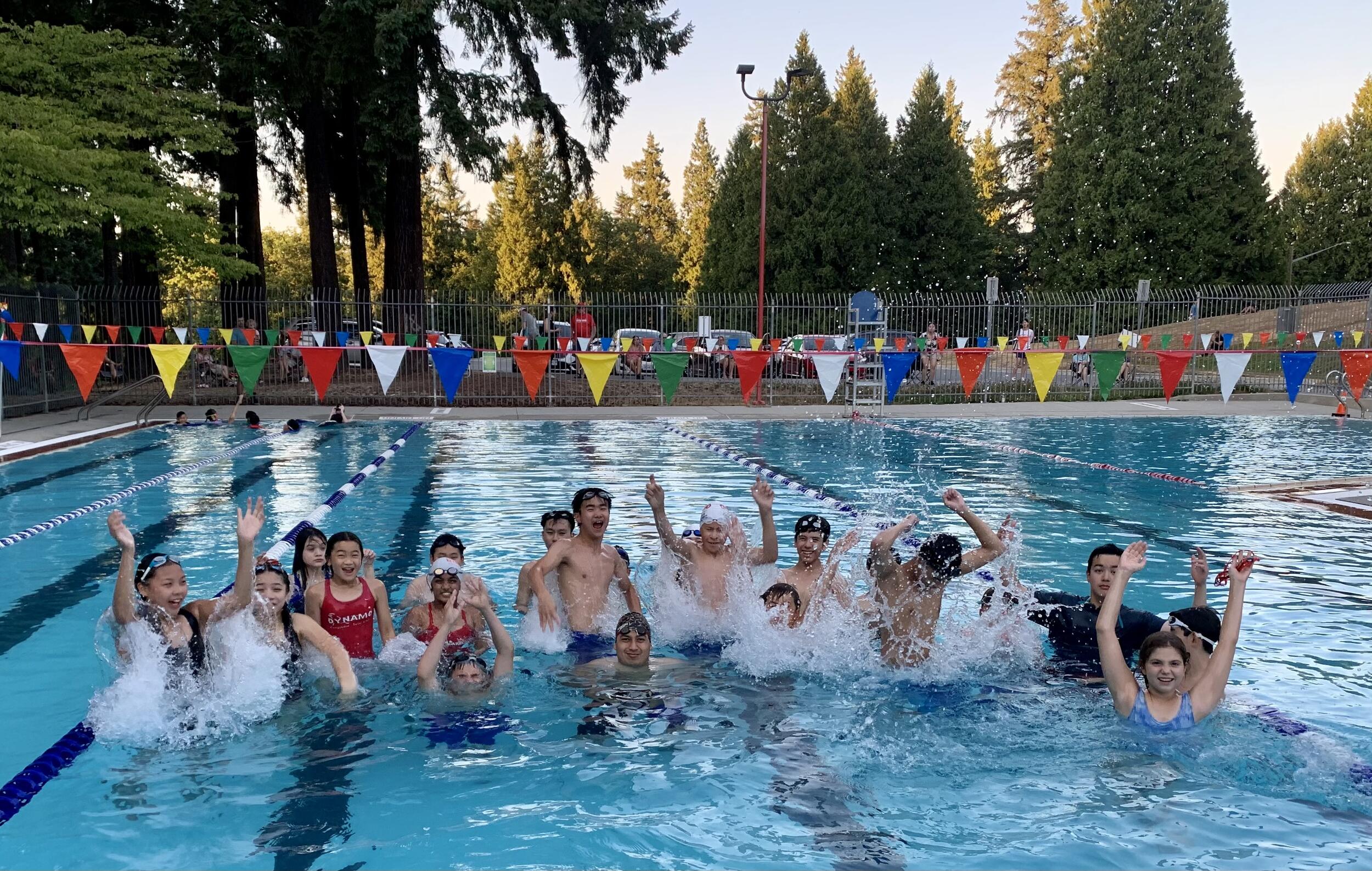
How Swimmers Move from Beginner to Elite, International Competitors DYNAMO prides itself on being able to offer swimmers at any level an opportunity to enjoy the benefits of club membership. DYNAMO swimming follows the directive(s) of the Long-Term Athlete Development Framework implemented by Swimming Canada. As such, we have developed a comprehensive “Age Group” program. Our program incorporates a series of transitions outlined on the programs page of the Dynamo website. Swimmers move through these groups by a combination of time standard requirements, commitment, age and maturity. Groups are dynamically defined by continuous attention to group size and skills distribution, so that all swimmers and groups receive optimal coaching attention. Group assignment is accomplished on an individual basis, and swimmers move through groups at their own pace. The competitive age groups are listed along the right. Regional Groups Swimmers generally come into this group from our SWIM SCHOOL or other programs. They typically swim three to four times a week, and compete primarily on LMR , time trials, all level and regional meets. These meets are informal, often small, and introduce athletes to the competitive circuit. Divisional Swimmers work towards AA and AAA time standard goals and swim between four and seven times a week. They still swim in regional meets, and begin to attend Invitational meets as well, some on the BC Mainland. Provincial Groups Comprise primarily provincial and club national swimmers from 11-20 years of age. Swimmers train between six and nine times a week. They compete at regional, provincial and national meets, with some swimmers competing at age group international level meets. National Group Swimmers train 7-10 times per week. National Group represents our highest level of training, with youth national, senior national and international swimmers competing at provincial, national and international meets, both out-of-province and out-of-country
YOUR RESPOSABILITY AS SWIMMING PARENT
Competitive swimming programs provide many benefits to young athletes. They develop self-discipline, good sportsmanship, and time management skills. Competition allows the swimmer to experience success and to learn how to deal with defeat, while becoming healthy and physically fit. As a parent, your major responsibility is to provide a stable, loving and supportive environment. This positive environment will encourage your child to continue. Show your interest by ensuring your child’s attendance at practices, and by coming to meets. Parents are not participants on their child’s team, but obviously contribute greatly to the success experienced by the child and the team. Parents serve as role models and their children often emulate their attitudes. Be aware of this and strive to be positive models. Most importantly, always show good sportsmanship toward coaches, officials, opponents, and teammates. YOUR ROLE AS A SWIM PARENT Be Enthusiastic and Supportive Remember that your child is the swimmer. Children need to establish their own goals and make their own progress towards them. Be careful not to impose your own standards and goals. Do not over burden your child with winning or achieving best times. The most important part of your child’s swimming experience is that they learn about themselves while enjoying the sport. This healthy environment encourages learning and fun, which will develop a positive self-image within your child. Let the Coach, Coach The best way to help a child achieve their goals and reduce the natural fear of failure is through positive reinforcement. No one likes to make mistakes. If your child swims poorly or struggles, remember that they are still learning. Encourage their efforts and point out the positive aspects of their swimming, things they did well. If they gave their best effort, you should make them feel like a winner. YOU RESPOSABILITY AS A SWIM PARENT Get Your Child ‘There’ on Time As in all sports there are many events that your child must attend, practices, team meetings, competitions, special events, etc. The coach wants your child to enjoy the experiences of swimming as much as possible. The coach also has a responsibility to look after the team as a whole. Start times are very important to get the most use out of pool time, ensure arrival commitments are made and events generally go as planned. Late members hurt everyone. If your child is going to be late or miss, let someone know. Become Involved This does not mean you have to run for board President your first year but try and get involved in some aspect of the club. The easiest starting point is to sign up to be an official at the first swim meet. You get to enjoy the competition, meet other parents, and watch your child participate. Officiating can be fun, and you can progress through the levels at a similar rate as your child. Very few other sports provide this opportunity. It is important that you try to attend your club’s monthly meetings and especially the Annual General Meeting. You certainly do not need to run for office, but you should be aware of the club’s business affairs. You also may have an expertise that the club could tap into for assistance. In this era of economically trying times, the cost of swimming is becoming progressively more difficult to deal with. It is imperative that parents pitch in to assist the club with all funds raising and cost-effective measures. The phrase “Many hands make light the load” is one that truly describes the approach you should have towards the task of running a swim club.